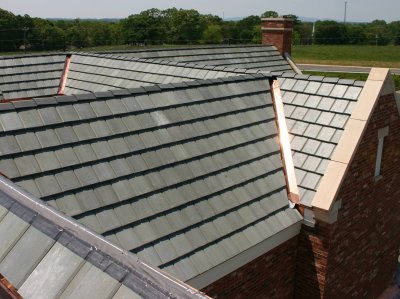concrete and tile roofing

Concrete tile roof .
Concrete tiles are made of extruded concrete that is colored. Traditional roofing tiles are made from clay. Concrete and clay tile roofing systems are durable, aesthetically appealing, and low in maintenance. They also provide energy savings and are environmentally friendly. And, although material and installation costs are higher for concrete and clay tile roofs, when evaluated on a price versus performance basis, they may out perform other roofing materials.
Tile adorns the roofs of many historic buildings as well as modern structures. In fact, because of its extreme durability, longevity, and safety, roof tile is the most prevalent roofing material in the world. Tested over centuries, roof tile can successfully withstand the most extreme weather conditions: hail, high wind, earthquakes, scorching heat, and harsh freeze-thaw cycles. Concrete and clay roof tiles also have unconditional Class A fire ratings, which means that, when installed according to building code, roof tile is non-combustible and maintains that quality throughout its lifetime.
In recent years, manufacturers have developed new water-shedding techniques and, for high-wind situations, new adhesives and mechanical fasteners. Because the ultimate longevity of a tile roof also depends on the quality of the sub-roof, roof tile manufacturers are also working to improve flashings and other aspects of the underlayment system.
Under normal circumstances, properly installed tile roofs are virtually maintenance free. And, unlike other roofing materials, roof tiles actually become stronger over time. Because of roof tile's superior quality and minimal maintenance requirements, most roof tile manufacturers offer warranties that range from 50 years to the lifetime of the structure.
Concrete and clay tile roofing systems are also energy efficient, helping to maintain livable interior temperatures (in both cold and warm climates) at a lower cost than other roofing systems. Because of the thermal capacity of roof tiles and the ventilated air space that their placement on the roof surface creates, a tile roof can lower air conditioning costs in hotter climates and produce more constant temperatures in colder regions, which reduces potential ice accumulation.
Tile roofing systems are made from naturally occurring materials and can be easily recycled into new tiles or other useful products. And, they are produced without the use of chemical preservatives, and do not deplete limited natural resources.
